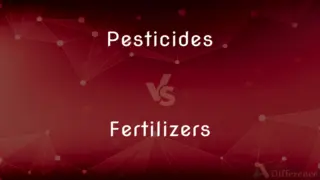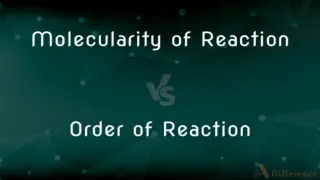Linking Verbs vs. Helping Verbs — What's the Difference?
Edited by Tayyaba Rehman — By Fiza Rafique — Published on December 31, 2023
Linking Verbs connect the subject to a subject complement, often an adjective or noun; Helping Verbs assist main verbs to convey tense, mood, or voice.

Difference Between Linking Verbs and Helping Verbs
Table of Contents
ADVERTISEMENT
Key Differences
Linking Verbs serve a specific grammatical function by connecting the subject of a sentence to a subject complement. This subject complement could be a noun, pronoun, or adjective that provides additional information about the subject. On the other hand, Helping Verbs don't stand alone but rather assist the main verb in expressing an action, state, or condition.
Considering their role, Linking Verbs often convey a state of being or condition. Words like 'is', 'are', 'was', 'were', and 'seem' are typical examples. These verbs help in providing more insight or description about the subject. Conversely, Helping Verbs are essential for forming different tenses, moods, and voices in English. Verbs like 'have', 'has', 'had', 'will', 'would', 'can', and 'could' are some examples.
In essence, Linking Verbs describe or rename the subject, acting as an equal sign in grammar. For instance, in "She is a teacher," 'is' links 'She' to 'teacher'. In contrast, Helping Verbs determine the precise meaning of a verb phrase. For example, in "She has taught for five years," 'has' helps to form the present perfect tense of 'taught'.
Using Linking Verbs correctly ensures clarity in sentences by providing clear connections between subjects and their attributes or identities. However, Helping Verbs add nuance to actions and states, clarifying when, how, or under what conditions something happens.
Ultimately, while both Linking Verbs and Helping Verbs play supportive roles in English grammar, their functions differ significantly. Linking verbs connect and provide more details about the subject, while helping verbs modify the main verb and adjust its meaning.
ADVERTISEMENT
Comparison Chart
Primary Function
Connect subject to complement
Assist main verbs
Examples
Is, are, was, were, seem
Have, has, had, will, would, can, could
Expresses
State of being or condition
Tense, mood, voice
Usage in Sentence
Provide more insight about the subject
Modify the main verb's meaning
Grammatical Relationship
Act as an equal sign in grammar
Determine the precise meaning of a verb phrase
Compare with Definitions
Linking Verbs
Connect the subject to a subject complement.
The apple is red.
Helping Verbs
Assist the main verb in a sentence.
She has visited Paris.
Linking Verbs
Convey a state of being or condition.
The dog seems happy.
Helping Verbs
Modify the meaning of the main verb.
I can swim.
Linking Verbs
Act as an equal sign in grammar.
The sky is blue.
Helping Verbs
Form part of a verb phrase.
He had finished his meal.
Linking Verbs
Provide more information about the subject.
The story was intriguing.
Helping Verbs
Add nuance to verb expressions.
She might attend the meeting.
Linking Verbs
Describe or rename the subject.
My brother is a doctor.
Helping Verbs
Express tense, mood, or voice.
They will go to the concert.
Common Curiosities
What are some common linking verbs?
Examples include: be, seem, become, appear, feel, look, sound, and taste.
Are "is," "am," and "are" linking verbs?
Yes, they are forms of the verb "be," which is a primary linking verb.
Can linking verbs be action verbs?
No. Linking verbs don’t express action; they connect the subject to more information about the subject.
What is a linking verb?
A linking verb connects the subject of a sentence to a subject complement, which is often an adjective or a noun.
How are helping verbs used in questions?
In questions, helping verbs often precede the subject. E.g., "Is she coming?" or "Have you seen this?"
What's the difference between linking and helping verbs?
Linking verbs connect the subject to a subject complement, while helping verbs assist the main verb to convey tense, mood, or voice.
Can a sentence have both a linking and a helping verb?
It's rare. A sentence like "She is being honest" has "is" (helping verb) and "being" (linking verb), but this structure is not common.
Are "will" and "be" always helping verbs?
Not always. "Will" can be a main verb meaning "intend to" or "desire," and "be" can be a linking verb.
Can a verb be both linking and action depending on context?
Yes. For example, "smell" can be an action (He smells the flowers) or a linking verb (The flowers smell sweet).
What is a helping verb?
A helping verb (or auxiliary verb) assists the main verb to express tense, mood, or voice.
Can a verb be both a main verb and a helping verb?
Yes. For example, "have" is a main verb in "I have a book" but a helping verb in "I have written a book."
What are some common helping verbs?
Examples include: be (am, is, are, was, were), have, do, will, would, shall, should, can, could, may, and might.
Why are helping verbs important in verb tenses?
Helping verbs determine and clarify the tense of the main verb, e.g., "I am writing" (present continuous) vs. "I have written" (present perfect).
How can I identify a helping verb in a sentence?
Look for verbs that don’t make sense on their own and precede another verb, like "has" in "She has gone."
How many helping verbs are there in English?
There are 23 helping verbs in English: am, is, are, was, were, be, being, been, have, has, had, do, does, did, shall, should, will, would, may, might, must, can, and could.
Share Your Discovery

Previous Comparison
Pesticides vs. Fertilizers
Next Comparison
Molecularity of Reaction vs. Order of ReactionAuthor Spotlight
Written by
Fiza RafiqueFiza Rafique is a skilled content writer at AskDifference.com, where she meticulously refines and enhances written pieces. Drawing from her vast editorial expertise, Fiza ensures clarity, accuracy, and precision in every article. Passionate about language, she continually seeks to elevate the quality of content for readers worldwide.
Edited by
Tayyaba RehmanTayyaba Rehman is a distinguished writer, currently serving as a primary contributor to askdifference.com. As a researcher in semantics and etymology, Tayyaba's passion for the complexity of languages and their distinctions has found a perfect home on the platform. Tayyaba delves into the intricacies of language, distinguishing between commonly confused words and phrases, thereby providing clarity for readers worldwide.













































